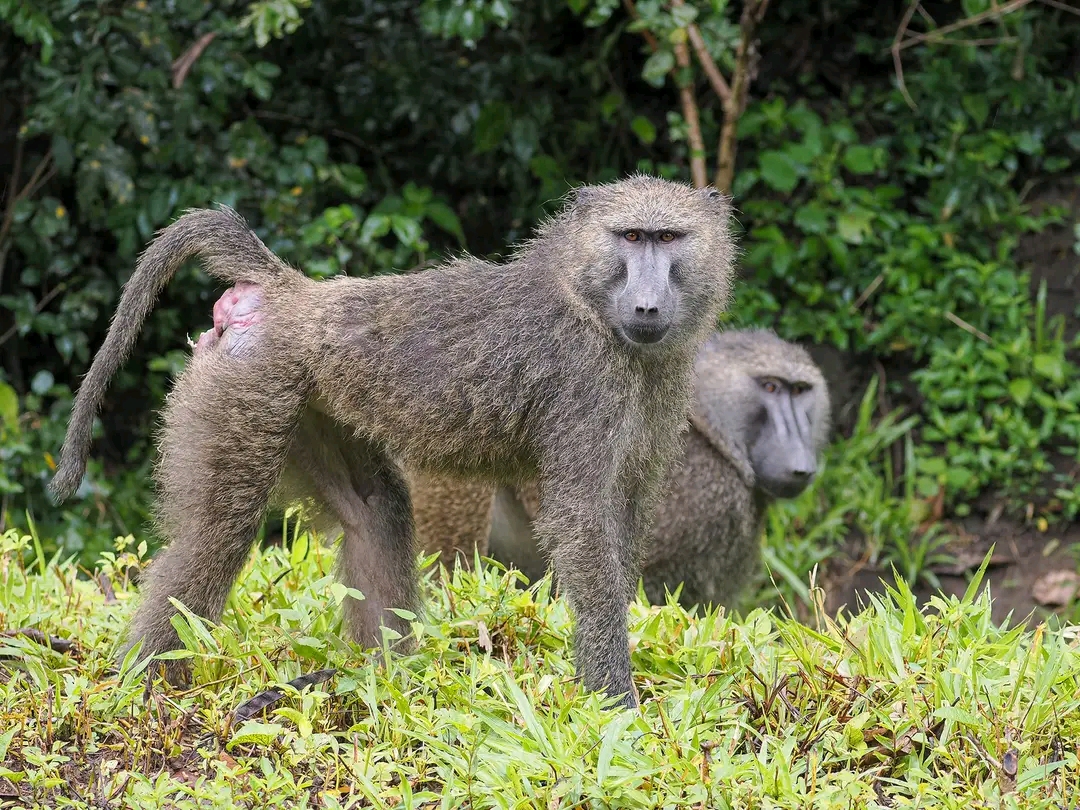
Olive Baboons
Olive baboons (Papio anubis) are fascinating primates found in various regions of Africa. Renowned for their complex social structures and adaptable nature, olive baboons display remarkable traits in terms of movement, diet, habitat, reproduction, physical appearance, social lifestyle, and territorial protection. Get a comprehensive overview of these aspects, shedding light on the captivating world of olive baboons.
Movement:
Olive baboons are highly agile and adept climbers. They possess strong limbs and a flexible body structure, enabling them to move with ease through various environments, including forests, savannas, and rocky terrains. Their movements involve walking on all fours, leaping between branches, and running swiftly on the ground. They use their long arms to swing and hang from trees, allowing them to navigate across different habitats efficiently.
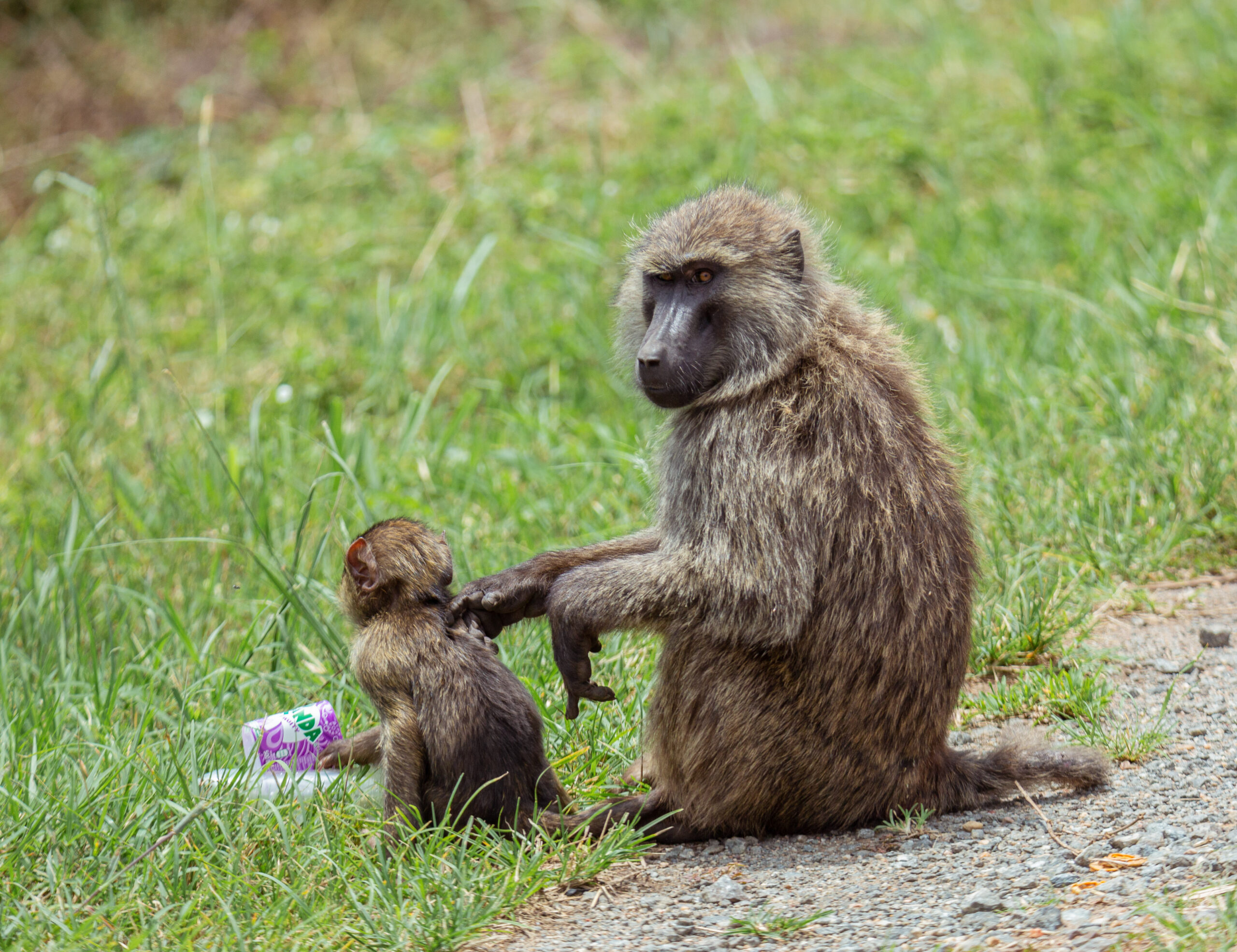
Diet:
Olive baboons are omnivorous creatures with a diverse diet. They primarily feed on a range of plant materials, including leaves, fruits, seeds, flowers, and bark. In addition, they also consume insects, small vertebrates, and occasionally raid agricultural fields for crops. This dietary flexibility enables olive baboons to adapt to different environments and ensures their survival even in challenging conditions.
Habitat and Range:
Olive baboons are found across various parts of Africa, including countries such as Kenya, Ethiopia, Uganda, Tanzania, and Sudan. They inhabit diverse habitats, including woodlands, savannas, grasslands and even mountainous regions. They are adaptable creatures and can thrive in both dry and moist environments.
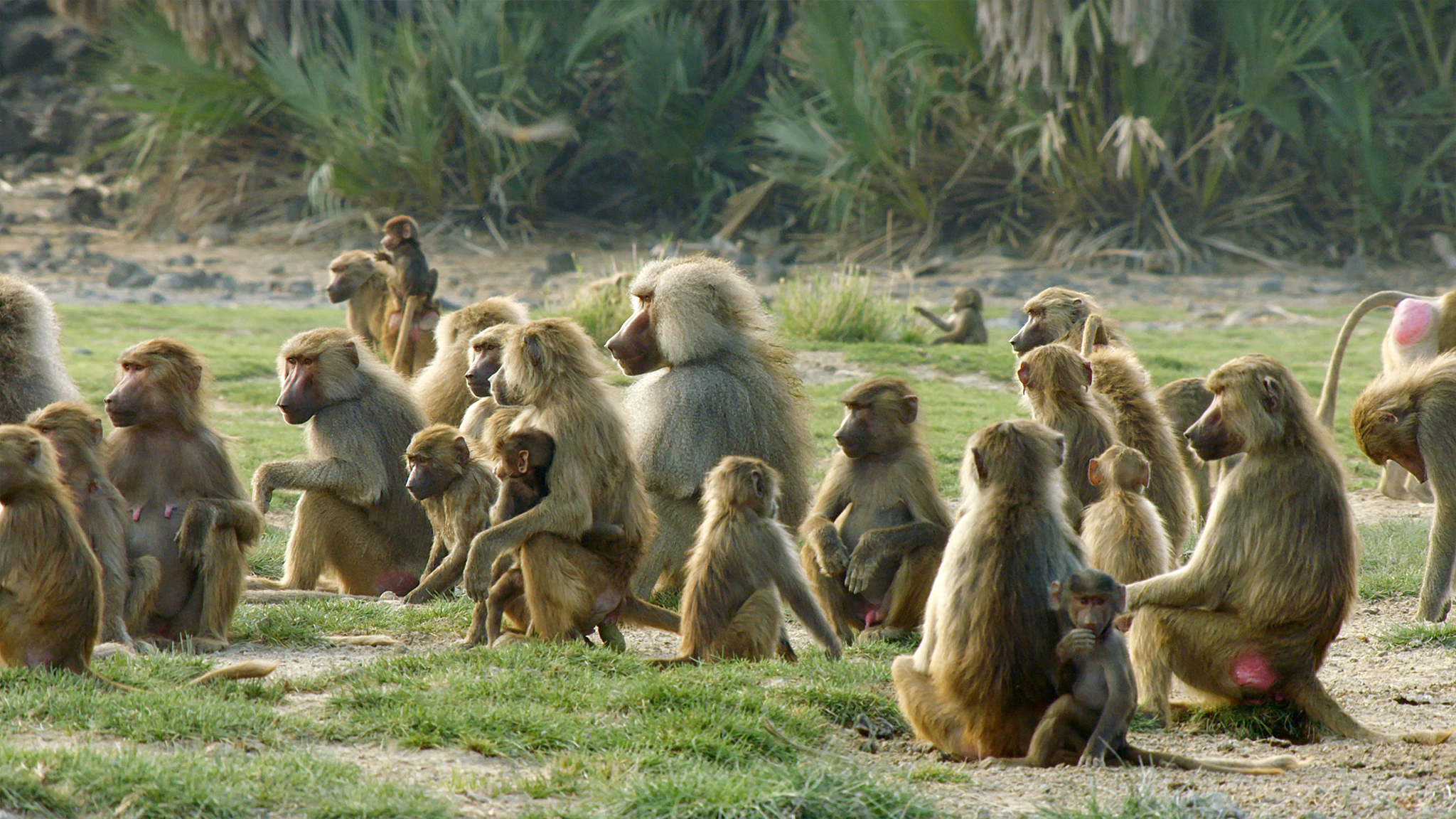
Reproduction:
Olive baboons have a polygynous mating system, where a dominant male mates with multiple females in his social group. Breeding occurs throughout the year, but there is usually a peak during certain seasons. After a gestation period of around six months, a female baboon gives birth to a single offspring, which is cared for by the mother and other females within the group. Young baboons are dependent on their mothers for several months, and they gradually become more independent as they grow.
Physical Appearance:
Olive baboons are medium to large-sized primates with distinct physical characteristics. They have a sturdy build, with males weighing between 20 to 40 kilograms and females ranging from 10 to 25 kilograms. Their fur color varies from yellowish-brown to gray, with a tint of olive, giving them their name. They have a hairless face, elongated muzzles, and a prominent, dog-like nose. Males have larger canine teeth, which they use for defense and asserting dominance within their social groups.
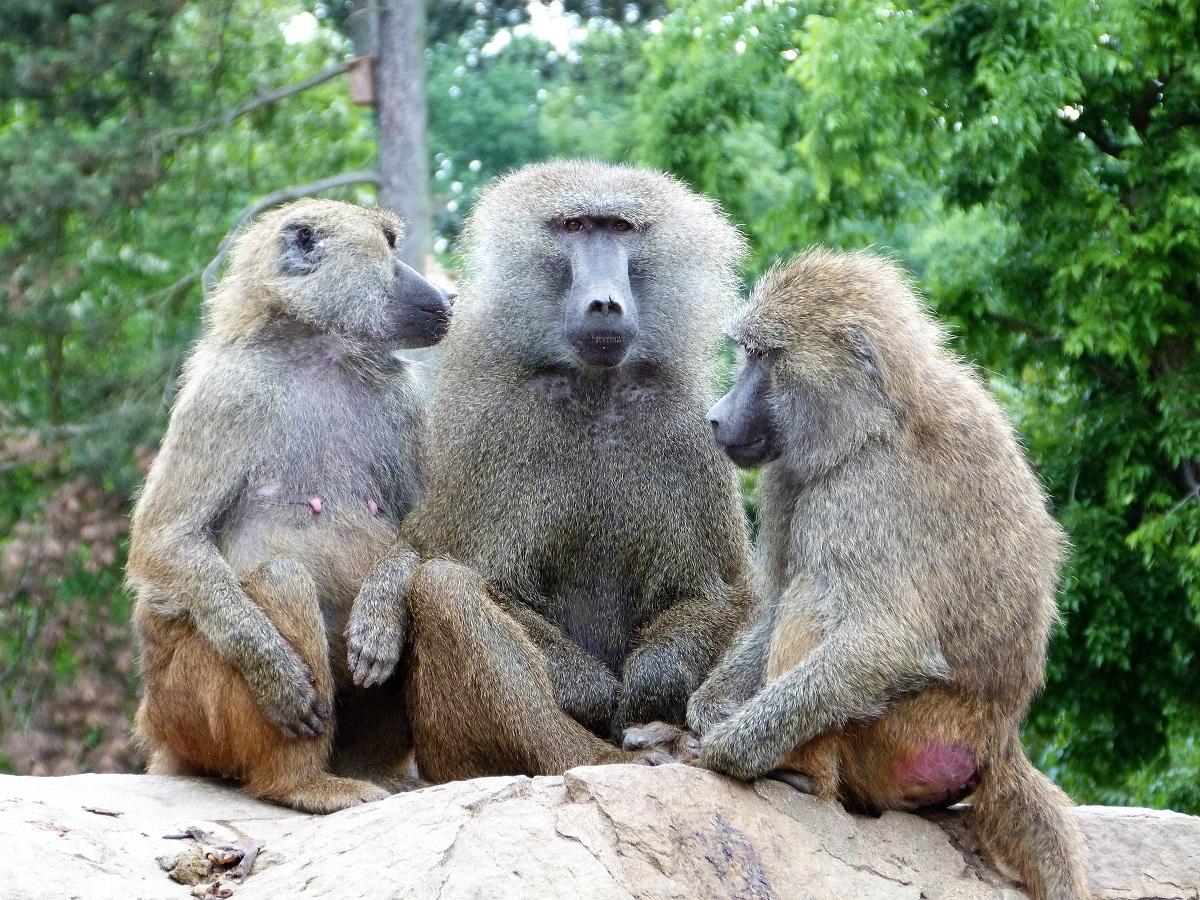
Social Lifestyle:
Olive baboons exhibit complex social structures, living in groups called troops that typically consist of multiple males, females, and their offspring. These troops can vary in size, ranging from a few individuals to larger groups of over 100 baboons. Within the troop, a dominance hierarchy is established, with the dominant male occupying the highest rank and enjoying reproductive privileges. Females form strong social bonds and play crucial roles in raising offspring, providing care and protection.
Where can you see Olive Baboons in Uganda?
One popular national park where you can potentially see olive baboons in Uganda is Kibale National Park. This park is in the western part of the country and is a popular destination for chimpanzees, as well as other primates like baboons and colobus monkeys. Other national parks such as Queen Elizabeth National Park and Murchison Falls National Park also offer opportunities to encounter olive baboons during wildlife safaris.
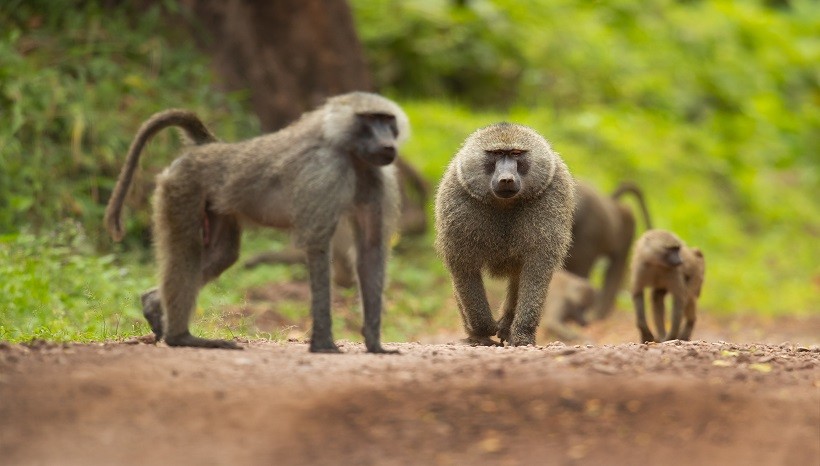
Please note that wildlife sightings can never be guaranteed, as animals roam freely in their natural habitats. It is always advisable to check with local tour operators or park authorities for the most up-to-date information on wildlife viewing opportunities in Uganda.
Territorial Protection:
Olive baboons protect their territories using various strategies. They mark their territories by vocalizations, such as barks and screams, and by leaving visual marks through scent marking. Dominant males play a vital role in defending the troop’s territory from intruders, often engaging in aggressive displays and physical confrontations. Cooperation among group members is crucial for maintaining territorial boundaries and protecting valuable resources.
Book a 10 days primate safari with gorillas, chimpanzees here
Conclusion:
Olive baboons are remarkable primates with diverse adaptations and intriguing social structures. Their ability to move swiftly through different habitats, adapt their diet, and navigate complex social dynamics has contributed to their success in various African environments. Understanding their behaviors, including movement patterns, diet, habitat preferences, reproduction, physical appearance, social lifestyle, and territorial protection, allows us to appreciate the complex nature of these fascinating animals and highlights the importance of conserving their natural habitats for future generations to witness their incredible existence.






